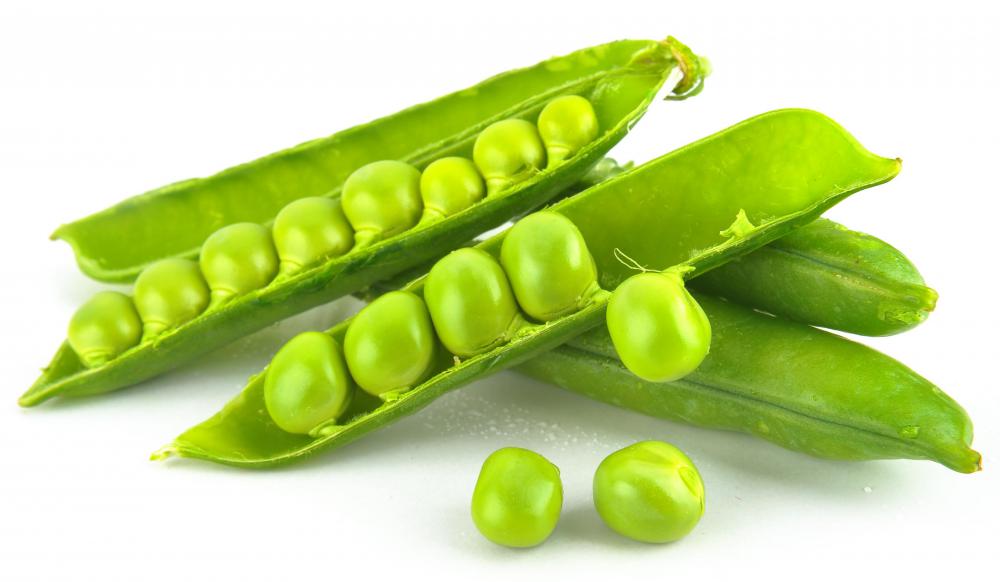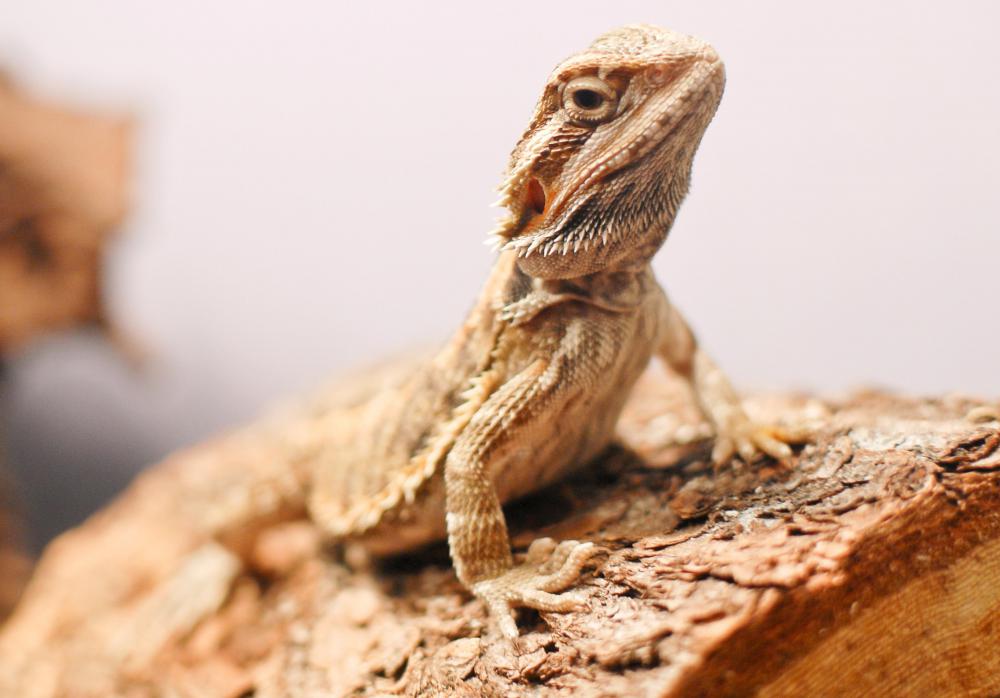At AllThingsNature, we're committed to delivering accurate, trustworthy information. Our expert-authored content is rigorously fact-checked and sourced from credible authorities. Discover how we uphold the highest standards in providing you with reliable knowledge.
How do I Care for a Bearded Dragon Lizard?
Bearded dragon lizards are named for their ability to extend the skin under their throats, thereby creating a beard-like appearance. According to many herpetologists — studiers of reptiles — bearded dragons make an excellent pet if a person wants to get a lizard. Generally, they are easy to care for, gentle, friendly, social, and only bite humans when provoked. A bearded dragon lizard is typically about 2 inches (about 5.1 cm) long when hatched; as adults, their size can range between 10 inches (about 25.4 cm) and 2 feet (about 61 cm) long. To properly care for a bearded dragon, you will need to have an enclosure big enough for your dragon, provide a constantly warm environment with direct light, and offer the correct balance of nutrition.
When setting up an environment for your bearded dragon lizard, you typically will want to ensure you choose a terrarium of the appropriate size. A 20 gallon (75 liter) tank is considered the minimum for a young bearded dragon lizard, and a 50 gallon (190 liter) tank is the minimum for an adult bearded dragon. Height usually should be taken into consideration too, as these lizards love to climb around in their cages.

There are numerous choices for bedding options — alfalfa pellets are one of the most popular options, since they won't harm a bearded dragon lizard if ingested. A water dish and a food dish are necessary, as well. The container typically will need to be cleaned of waste and leftover food daily. Since bearded dragon lizards love to climb around, branches, rocks, or trees could be provided for them to climb around on. Generally, a shelter should be provided for the dragon to hide in; this can be as simple as a small cardboard box or as fancy as a cave purchased at a store.

Bearded dragon lizards naturally live in a desert-like environment and the temperature in the terrarium should be kept at a steady 80° to 85° F (about 26° to 30° C), although at night a temperature around 70° F (about 21° C) is acceptable. A basking area with a temperature of 88° to 95° F (31° to 35° C) should be provided as well. The terrarium can be heated with basking lights, which are only used during the day. Heating rocks generally should be avoided as they can easily burn a bearded dragon lizard.

If at all possible, the terrarium typically should be placed where plenty of natural light is available. Also, a full-spectrum ultraviolet (UV)-B light should be put in the terrarium. This light helps ensure the lizard is getting enough vitamin D3, which is necessary for proper calcium absorption and should also be turned off at night.
A bearded dragon lizard typically will eat plants, insects, and small animals. The majority of an adult's diet should consist of plants and vegetables, while juvenile lizards tend to be more omnivorous, eating about a 50/50 mix of plant and animal/insect matter. Before being put in the cage, the vegetables should be finely chopped — the smaller the lizard, the more finely chopped they should be. A good mix of vegetables would generally consist of chopped raw carrots, dandelion greens, kale, parsley, and frozen vegetables, such as peas and beans. When feeding bearded dragon lizards animals or insects, be sure not to feed them anything larger than the space between their eyes — anything larger can choke or paralyze them. Supplemental pellets and vitamins can be purchased at pet stores, but should only be used two or three times per week and never as the bulk of a bearded dragon's diet.
Frequently Asked Questions
What is the ideal habitat setup for a bearded dragon?

To create a comfortable habitat for a bearded dragon, you'll need a spacious terrarium—at least 40 gallons for an adult. Provide a temperature gradient from 75-85°F on the cool side to 95-110°F in the basking area, with proper UVB lighting for 12-14 hours a day to simulate sunlight, which is crucial for their health. Include hiding spots and non-toxic plants to mimic their natural environment.
How often should I feed my bearded dragon, and what should their diet consist of?
Bearded dragons' feeding schedules vary with age. Juveniles require daily feedings, while adults do well with meals every other day. Their diet should be a mix of insects like crickets and mealworms, and dark leafy greens such as kale and collard greens. Occasional fruits can be offered as treats. Always provide fresh water and avoid foods high in oxalates and phosphorus.
How do I ensure my bearded dragon is getting enough exercise?
Encourage physical activity by providing a large enough enclosure for your bearded dragon to move around freely. Include branches for climbing and a variety of surfaces to explore. Regular, supervised time outside the terrarium in a safe, escape-proof room can also help them exercise and stimulate their minds, promoting overall well-being.
What are the signs of a healthy bearded dragon versus one that may be sick?
A healthy bearded dragon will have clear, bright eyes, a well-rounded body, and be alert and active. They should have a strong appetite and regular bowel movements. Signs of illness include lethargy, sunken eyes, weight loss, abnormal feces, or breathing difficulties. If you notice any of these symptoms, consult a veterinarian experienced with reptiles.
How do I properly handle and interact with my bearded dragon to build trust?
Start by allowing your bearded dragon to get used to your presence. Move slowly and speak softly to avoid startling them. Gently scoop them up from underneath rather than grabbing from above, which can seem threatening. Support their legs and body, and allow them to climb onto your hand if they prefer. Consistent, gentle handling will build trust over time.
What are the most important veterinary care considerations for bearded dragons?
Regular veterinary check-ups are essential for bearded dragons to ensure they remain healthy. A vet can provide advice on proper nutrition, habitat setup, and identify any health issues early on. Parasite screenings and fecal exams are important, as parasites can be common in reptiles. Additionally, be aware of metabolic bone disease, a common issue in bearded dragons due to improper calcium or UVB levels.
AS FEATURED ON:
AS FEATURED ON:














Discuss this Article
Post your comments